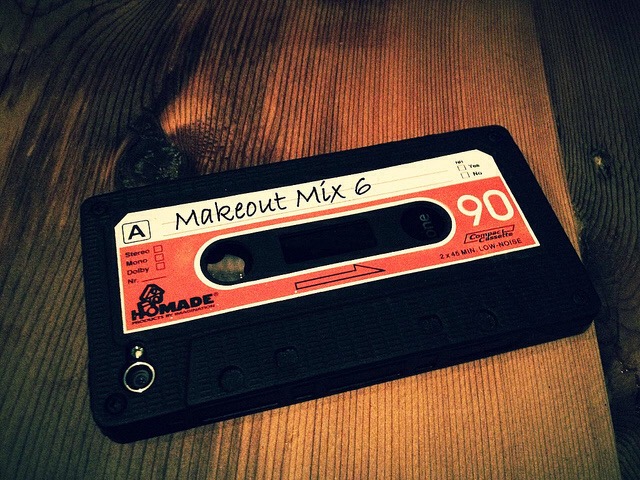
Somewhere on your hard drive there’s a folder you’ve been avoiding. It’s full of such solid gold hits as:
- AUDIO001.WAV
- AUDIO002.WAV
- AUDIO003.WAV
And who could forget such timeless classics as:
- 2012-02-28 18:39.MP4
- 2010-07-04 07:02.MP4
- 2015-04-19 01:07.MP4
In other words, there’s at least one folder on your hard drive that’s a hot mess — there could be some great ideas in there, but they’re buried in a pile. So for now, those songs are stuck.
In this post, we’ll look at a much easier way of cataloguing your many ideas and songs-in-progress, so you get a better shot at finishing the songs you’ve started. If you’re looking for software to organize all of your files, have a look into websites such as FilecenterDMS.com for file management solutions.
Give your recordings meaningful names.
One danger of recording on a computer is that it’s way too easy to click “Save As…”, then just accept whatever default name the program gives your song. I’ve made this mistake myself at least a few hundred times over the years. “Yeah, whatever, AUDIOFILE095-24.WAV, that works.” Then you’re off to the rest of your day.
But these files amass over time: AUDIOFILE095-25.WAV, AUDIOFILE095-26.WAV, on and on. Soon your recording folder looks like total mayhem. And that one gem of a song, the one that could be your legacy? That’s buried in there somewhere, half-forgotten, where you can’t find it. And the folder’s such a mess that you don’t want to even start looking. You’ll put it off until doomsday afternoon.
Filenames are like cassette cards
Before home computers became such useful tools, most home musicians recorded on four-track cassette recorders. Blank cassette tapes came with something called a “J-card”, which is that folded-up piece of cardstock inside the plastic case. They also came with little adhesive labels. You’d write the name of your song (or your song-in-progress) on the labels, peel them off, and stick them to the cassette. You’d write the name of the song on the J-card. Then you wouldn’t even have to play the tape to know what it was — you could just glance at it and know.
That’s the job of digital filenames, too: you should be able to just read the name and know what it is without having to listen. In the filename, you might want to make notes on:
- The recording’s genre
- The overall mood of the fragment (see the Plutchik wheel)
- The chords or scale used
- Any imagery the fragment conjures for you
- The name of the song
You may also want to mark song ideas you’re especially excited about. In folk circles in Maine, fiddler and composer Hope Hoffman used to start filenames with “GOOD” if she liked the piece she was saving.
Sort your files into piles
As with your lyric writing notebook, it helps to organize your audio files into three folders:
- IDEAS — for scraps and loose ideas.
- DRAFTS — for songs in progress.
- DONE — finished demos go here.
Sorting your recordings into these three folders is surprisingly helpful. When you need ideas, you look in IDEAS. To work on a song in progress, open the DRAFTS folder. Meanwhile, DONE will store your completed demos. It’s a much easier way to work than opening up a messy folder and make sense of a thousand and one unlabeled files. When in your daily life would you have time for that?
Label your files and sort them into these three folders, so you’ll know exactly what you’re working with each time you sit down to write.
Importing fragments from your field recorder
Your “field recorder” is probably a smartphone, or if you’re fancy, it might be a handheld recording device. Whatever device you use, be sure to move recordings from this capture device over to your main filing system on at least a weekly basis.
Recording devices tend to give nonsense names to audio files, so be sure to listen back to those scraps often and rename them with meaningful titles, as outlined above.
Got a backlog of filenames to fix?
For your own sanity, and for your songs’ sake, resolve to pause and give a meaningful filename to every new piece of music you record from now on. Even if it’s just a seven-second clip, write something descriptive so you’ll know what it is later on.
Quarantine all your old, badly-named mystery files in a folder called “SORT US” for now. Now back up all your digital files to an external hard drive. Believe me, you don’t want to lose years of hard work to a simple hard drive failure.
As you can, listen to a few of these files from SORT US at a time and give them meaningful, descriptive names. Then move each one to the appropriate folder: IDEAS, DRAFTS, or DONE.
Once you get going, listening to these old recordings can actually be fun, like reconnecting with old friends. It allows you to gain perspective over all the songs you’ve started, so that you can make better choices about which ones to finish and which ones to trash.
The trick is — as my grandpa used to say — “You’ve just got to get it started.”
Best iPhone case ever–photo by Chris Breikss
For quick convenient recording I’ve been using an mp3 recorder app on my smartphone and then later uploading those ideas to folders on Dropbox. I took some notes and enjoyed reading your article- thanks for your input Nicholas!
Yeah, Dropbox is great for uploading audio files so that you can access them from any device. Great tip for sure. In case anyone is interested:
http://dropbox.com
Thanks, Joy!